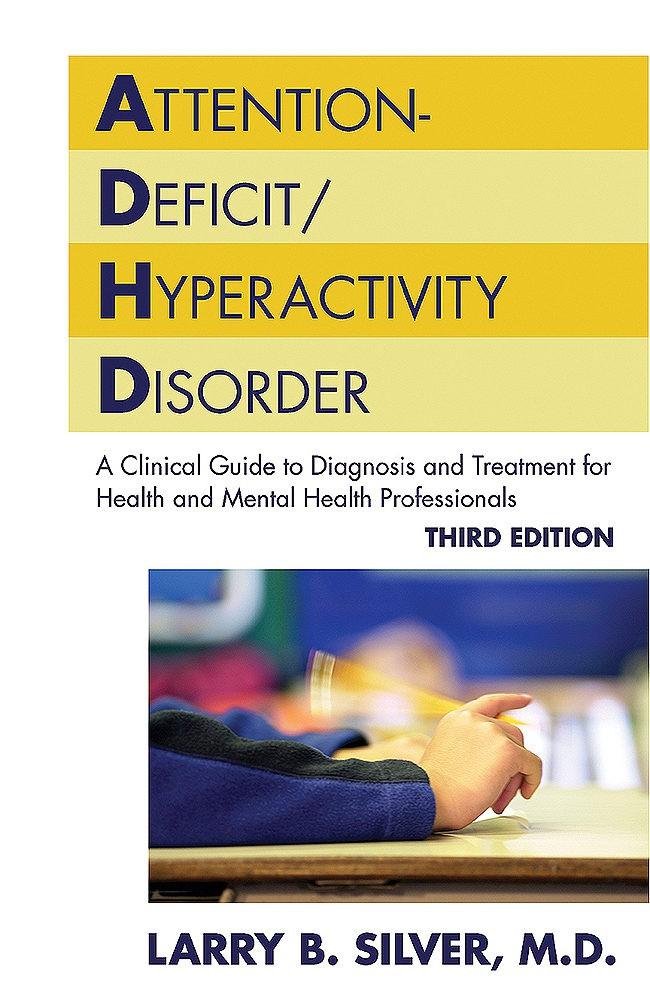Attention-Deficit/Hyperactivity Disorder by Larry B. Silver

Author:Larry B. Silver
Language: eng
Format: mobi
Tags: Psychology, Health & Well Being, Specialties, Nonfiction, Psychiatry, Medical
ISBN: 9781585627257
Publisher: American Psychiatric Publishing
Published: 1991-12-31T22:00:00+00:00
Working With the
School System
After the diagnosis of attention-deficit/hyper-
activity disorder (ADHD) is established, the clinician and the parents need to work with the classroom teachers and with the school system.
The goal is to create the best classroom environment possible and to clarify the services or accommodations that the student with ADHD
might need. The clinician working with the student who has ADHD
might be able to work directly with school personnel or might refer the family to someone else for help. In this chapter, I first review special needs relating to the classroom environment, and then I discuss broader issues relating to the school system and to school services.
When planning the placement, curriculum, and classroom strate-
gies needed for a student with ADHD, two important factors must be considered. Each factor influences the program that is developed. The first factor is whether the student also has a learning disability. Since about 30 percent of students with ADHD will also have a learning disability, it is essential to clarify this. The second factor is whether the student is on a successful medication regimen.
If the student has a learning disability, then these processing problems must be addressed through appropriate special education services as well as accommodations provided within the general education
classroom. Some students with ADHD may not have learning disabilities, but have areas of difficulty with specific skills, or they may be behind peers in certain knowledge areas because they were not as
available for learning during the school years before the diagnosis was made and treatment was started. For such students, efforts must be made to fill in the gaps and to help them catch up to grade level.
129
130
A T T E N T I O N - D E F I C I T / H Y P E R A C T I V I T Y D I S O R D E R
If the student is on a successful medication regimen, few adjust-
ments may be needed in the classroom or in teaching style. The teacher will need to understand the medication, its effects and side effects, and know how and when to communicate with the child’s physician. If the student is not on medication or is on a poorly managed treatment plan, hyperactivity, distractibility, and/or impulsivity must be addressed. If the ADHD behaviors make the student unavailable for learning or
make the classroom environment such that other students cannot learn, it may be appropriate to consider identifying him or her as “Seriously Emotionally Disturbed.” In this way, the student can be placed in a special education environment where the behaviors are better addressed than in the general education classroom.
The Classroom and Classroom Teachers
Ideally, appropriate medication will minimize or stop the student’s hyperactivity, distractibility, and/or impulsivity. If so, the classroom teacher needs to understand the medications, how they work, what side effects might occur, how to observe behaviors, and how to communicate with the clinician who is managing the medications. If the medication is less than successful, the classroom teacher will need to make special efforts to help the student in the classroom.
Download
This site does not store any files on its server. We only index and link to content provided by other sites. Please contact the content providers to delete copyright contents if any and email us, we'll remove relevant links or contents immediately.
I Capture the Castle by Dodie Smith(1906)
Aspergirls by Rudy Simone(1585)
Be Different by John Elder Robison(1558)
Autism's False Prophets by Paul A. Offit(1450)
My Child's Different by Elaine Halligan(1428)
Smart but Scattered—and Stalled by Richard Guare(1415)
101 Tips for the Parents of Boys with Autism by Ken Siri(1382)
What's Making Our Children Sick? by Michelle Perro(1350)
Asperger Syndrome (Autism Spectrum Disorder) and Long-Term Relationships by Ashley Stanford(1332)
ADHD by Mark Selikowitz(1304)
Girlish by Lara Lillibridge(1294)
Nerdy, Shy, and Socially Inappropriate by Cynthia Kim(1272)
An Adult with an Autism Diagnosis by Gillan Drew(1265)
On Immunity: An Inoculation by Biss Eula(1246)
Animal-assisted Interventions for Individuals with Autism by Temple Grandin(1223)
Sarah's Child (Hqn Romance) by Linda Howard(1221)
Seeing Ezra by Kerry Cohen(1199)
Why Gender Matters by Leonard Sax M.D. Ph.D(1184)
The Cities by K.A Knight(1178)
